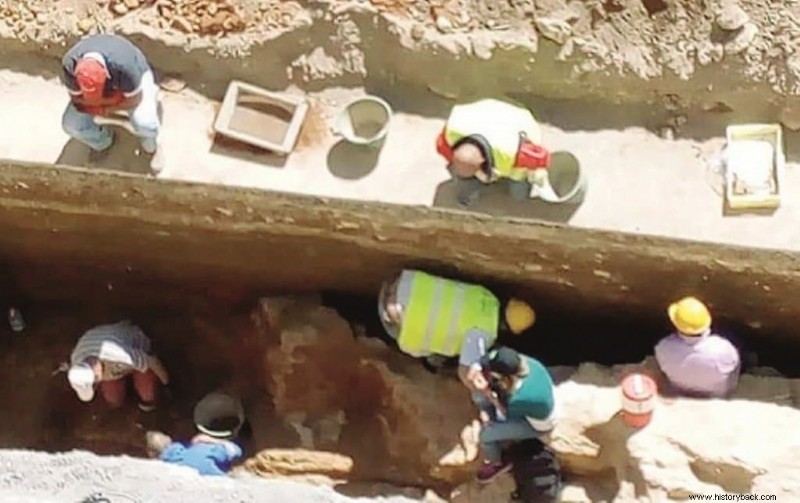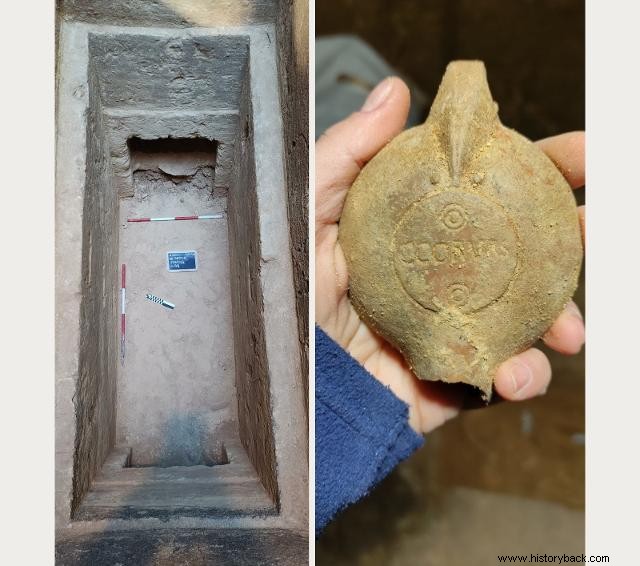The preventive archaeological excavations for the reconstruction of the sewer network of the Sicilian city have brought to light, in via De Gasperi, the extraordinary remains of two inviolate underground chambers containing the funerary equipment and the remains of buried bodies.

To this were added about 50 tombs, located at a lesser depth, probably referable to a Punic necropolis.
The first hypogeum, according to a first survey presumably datable to around the middle of the IV century BC , has two quadrangular funeral chambers of about 4 square meters.
Here the remains of 5 buried bodies, 3 adults and 2 children, were found, with the relative funerary equipment consisting of some vases and small metal objects datable to the middle of the 4th century BC approx.

The hypogeum has access to a rectangular shaft measuring 0.66 × 2.04 meters.
The second hypogeum has a multi-level structure in which it is possible to recognize different architectural and use phases, which could cover a time span of at least 7 centuries . A first large rectangular room of about 35 square meters seems to be the result of the expansion and union, carried out in Roman times (around the 2nd century AD), of some pre-existing Punic burials dating back to the 4th-3rd century BC.
This second hypogeum has a series of burials carved out along the walls: specifically, 6 coffered tombs, 8 niches and 8 quadrangular niches were found. Some coffered tombs (2 of 6) have preserved remains of buried inside.
The 6 rectangular pit tombs were dug directly on the floor of the burial chamber.

The discovery, within them, of ceramic material and figured and stamped lamps, as well as various buried ones, suggests a use ranging from II to IV / V century AD, with a first phase of Jewish worship and a second Christian one.
But that's not all:in the most superficial part, at a depth between 50 centimeters and 3.40 meters from the road, about 50 well and rectangular pit graves of an average size of 0 m were found. , 45 × 1.75, which seem to refer to the Punic necropolis of the IV-III century BC

The works, in compliance with the provisions laid down by the Superintendence for Cultural and Environmental Heritage of Trapani, are carried out under the scientific direction of the archaeologist Giuseppina Mammina.
To lead them on the field are Sharon Sabatini (SAMA Archaeological Excavations) and Sebastiano Muratore , archaeologist of the executing firm. The workers Joan Sararu, Giuseppe Amodeo, Mirko Genna and Riccardo Ingarra also contributed to the excavation work.
Alberto Samonà, councilor of cultural heritage and Sicilian identity, commented on the discovery of the necropolis in Sicily as follows: "That of Marsala is a discovery of the highest archaeological value and gives us the opportunity to reiterate how vast and wonderful it is. both the heritage hidden underground ”
The comment of the Superintendent of Trapani Mimma Fontana and the archaeologist Giuseppina Mammina:"These exceptional findings give us an untouched part of the ancient necropolis. The two underground chambers add precious material that will be the subject of in-depth analysis and analysis and thanks to which we will be able to learn more about the historical fabric of the city of Marsala " .
